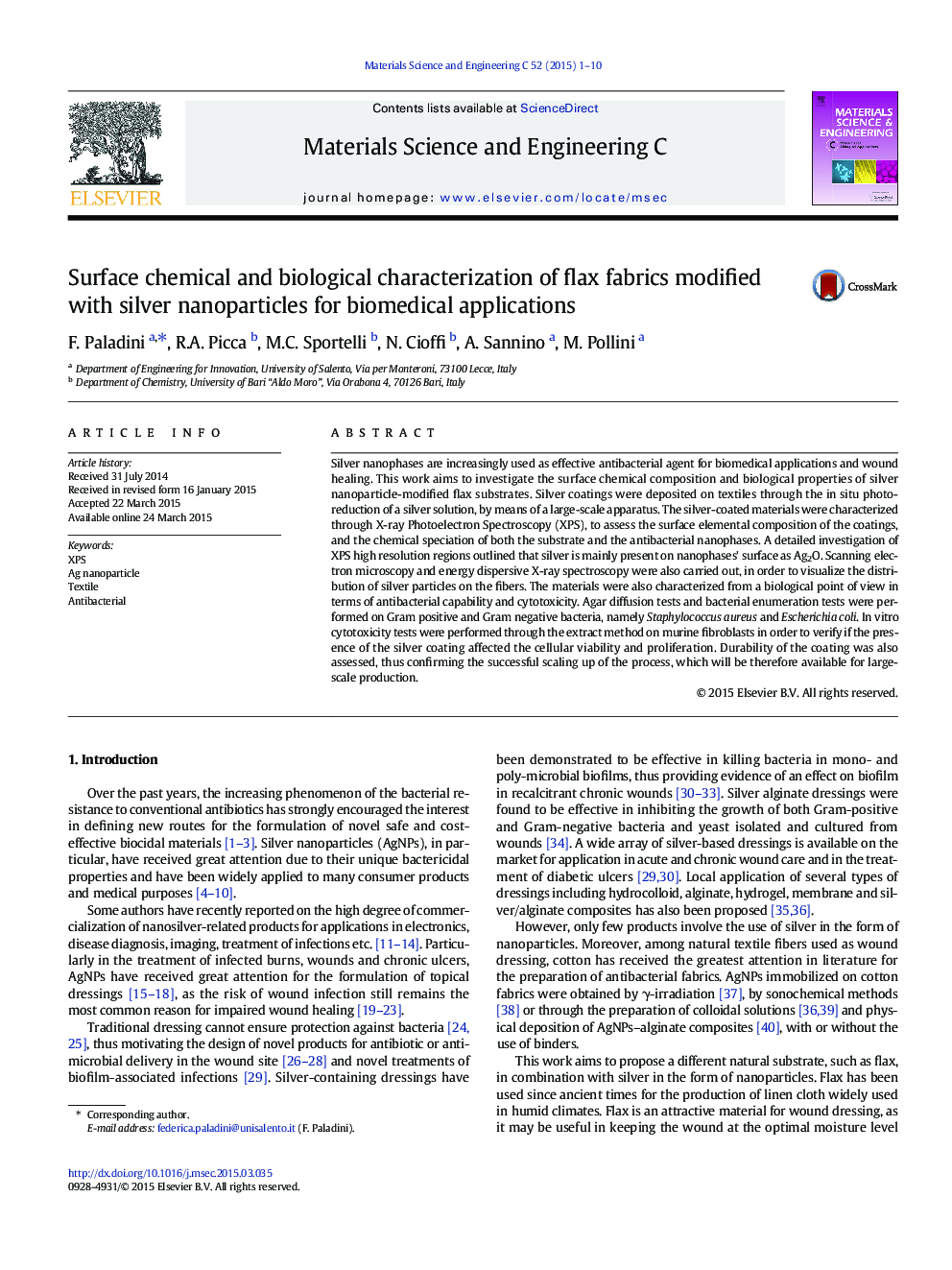| Article ID | Journal | Published Year | Pages | File Type |
|---|---|---|---|---|
| 7869339 | Materials Science and Engineering: C | 2015 | 10 Pages |
Abstract
Silver nanophases are increasingly used as effective antibacterial agent for biomedical applications and wound healing. This work aims to investigate the surface chemical composition and biological properties of silver nanoparticle-modified flax substrates. Silver coatings were deposited on textiles through the in situ photo-reduction of a silver solution, by means of a large-scale apparatus. The silver-coated materials were characterized through X-ray Photoelectron Spectroscopy (XPS), to assess the surface elemental composition of the coatings, and the chemical speciation of both the substrate and the antibacterial nanophases. A detailed investigation of XPS high resolution regions outlined that silver is mainly present on nanophases' surface as Ag2O. Scanning electron microscopy and energy dispersive X-ray spectroscopy were also carried out, in order to visualize the distribution of silver particles on the fibers. The materials were also characterized from a biological point of view in terms of antibacterial capability and cytotoxicity. Agar diffusion tests and bacterial enumeration tests were performed on Gram positive and Gram negative bacteria, namely Staphylococcus aureus and Escherichia coli. In vitro cytotoxicity tests were performed through the extract method on murine fibroblasts in order to verify if the presence of the silver coating affected the cellular viability and proliferation. Durability of the coating was also assessed, thus confirming the successful scaling up of the process, which will be therefore available for large-scale production.
Related Topics
Physical Sciences and Engineering
Materials Science
Biomaterials
Authors
F. Paladini, R.A. Picca, M.C. Sportelli, N. Cioffi, A. Sannino, M. Pollini,
